-
 Welcome to Microsoft Research Cambridge
Welcome to Microsoft Research CambridgeBiography
Andrew Blake is a Microsoft Distinguished Scientist and the Laboratory Director of Microsoft Research Cambridge, England. He joined Microsoft in 1999 as a Senior Researcher to found the Computer Vision group. In 2008, he became a Deputy Managing Director at the lab, before assuming his current position in 2010. Prior to joining Microsoft, Andrew trained in mathematics and electrical engineering in Cambridge England, and studied for a doctorate in Artificial Intelligence in Edinburgh. He was an academic for 18 years, latterly on the faculty at Oxford University, where he was a pioneer in the development of the theory and algorithms that can make it possible for computers to behave as seeing machines.
-
The Once and Future Internet
Abstract
“The Once and Future Internet,” with apologies to T. H. White. In this talk, I will describe the past and anticipated future of the technology of the Internet, briefly structuring the seminar around the themes inspired by the volumes of the book, The Once and Future King, by T. H. White.
In the beginning, we were all learning about computer communications networks with little guidance. There were many parallel attempts to design and build what became packet switched networks. A bit like Mort learning lessons (remember Art in the Disney film, The Sword in the Stone) from many animals on how to fly, swim, etc, we had to learn how to do naming, addressing, routing, reliability and performance management.
In the end, the winner who pulled the sword out of the stone, so to speak, was the Internet, perhaps because we just had more funding for longer and especially since it was US based.
Having constructed the Internet as a prototype, in 1992, Tim Berners-Lee showed up with the World Wide Web, almost complete from day 1 as a much nicer way for everyday folk to use the network, than the rather odd applications and user interfaces that we had previously devised. Almost immediately (as with Arthur’s kingdom described in The Queen of Air and Darkness aka The Witch in the Wood) bad people started to show up on the network. We had made little provision for security.
It seems that with all the best intentions, users are (perhaps like Lancelot, in The Ill-Made Knight) their own worst enemies. Most people fall for scams, phishing, and so on. Some may wonder what the Holy Grail of the Internet was at this point, and I will offer some possible candidates, while not claiming to be any kind of Galahad.
The end of the Internet is frequently foretold—much as the end of Arthur’s Round Table—the ideals espoused by early (and even practised in the mid-period of the Internet in its past 30 years) seem to be evaporating, like The Candle in the Wind.
However, some of the principles for the design of the network are just that: principles. As in The Book of Merlin, the engineering design rules handed down from early Internet seem likely to last in future incantations. In particular, the end-to-end argument appears to continue to inform many design discussions, and I’ll finish some observations on its continued applicability.
Biography
Jon Crowcroft has been the Marconi Professor of Communications Systems in the Computer Laboratory since October 2001. He has worked in the area of Internet support for multimedia communications for over 30 years. Three main topics of interest have been scalable multicast routing, practical approaches to traffic management, and the design of deployable end-to-end protocols. Current active research areas are Opportunistic Communications, Social Networks, and techniques and algorithms to scale infrastructure-free mobile systems. He leans towards a “build and learn” paradigm for research.
He graduated in Physics from Trinity College, University of Cambridge in 1979, gained an MSc in Computing in 1981 and PhD in 1993, both from UCL. He is a Fellow the Royal Society, a Fellow of the ACM, a Fellow of the British Computer Society, a Fellow of the IET and the Royal Academy of Engineering and a Fellow of the IEEE.
He likes teaching, and has published a few books based on learning materials.
-
 FaRM: Fast Remote Memory
FaRM: Fast Remote MemoryAbstract
I will talk about the design and implementation of FaRM, a new main memory distributed computing platform that exploits RDMA communication to improve both latency and throughput by an order of magnitude relative to state of the art main memory systems that use TCP/IP. FaRM exposes the memory of machines in the cluster as a shared address space. Applications can allocate, read, write, and free objects in the address space. They can use distributed transactions to simplify dealing with complex corner cases that do not significantly impact performance. FaRM provides good common-case performance with lock-free reads over RDMA and with support for collocating objects and function shipping to enable the use of efficient single machine transactions. FaRM uses RDMA both to directly access data in the shared address space and for fast messaging and is carefully tuned for the best RDMA performance. We used FaRM to build a key-value store and a graph store similar to Facebook’s. They both perform well, for example, a 20-machine cluster can perform 160 million key-value lookups per second with a latency of 31 micro-seconds.
Biography
I am a researcher in Systems and Networking group at Microsoft Research Cambridge. I am interested in many areas of computer science, but mainly in concurrent and distributed computing. Lately I have been really excited about several emerging hardware trends and their impact on the design of software systems that run in data centres. I am currently looking into how to build systems to best exploit large amounts of DRAM and fast networks with RDMA primitives. I prefer staying on the practical side of problems and enjoy implementing real systems ranging from simple script based solutions to everyday problems to complex research prototypes. I received my PhD from EPFL Switzerland in 2012, where I worked on performance of software transactional memory. Before that, I received my Graduate Electrical Engineer diploma from University of Novi Sad, Serbia in 2004.
-
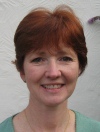 How to Present a Poster at an International Conference
How to Present a Poster at an International Conference- Watch the Session
Abstract
Presenting a poster at an international conference is a terrific opportunity to promote your research and raise your professional profile in a global academic forum. However, it can be daunting to compete with other presenters to get the attention of a passing audience. As well as a clear and captivating poster, you need the ability to build rapport quickly and present your subject positively and succinctly.
This can be especially challenging when English is the shared language but not everyone’s mother tongue. Whether you are a native or a non-native English speaker, you will require flexibility and sensitivity to others in order to get your message across clearly.
During the three poster sessions, Sue will be hovering in the room, watching and listening to your approach. She will then prepare to highlight on the final day the key thought-processes as well as the verbal and non-verbal skills you need to give a powerful poster presentation.
Sue will also be available each day to provide confidential one-to-one feedback for any students who are interested.
Biography
Sue Duraikan runs Duraikan Training (www.duraikan-training.com), a consultancy which aims to help individuals and organisations develop. Duraikan Training provides support in designing and delivering learning strategies. We also run group workshops and one-to-one coaching on a wide range of professional skills. As a former teacher of French and German and with wide experience of working globally, Sue Duraikan has a particular interest in cross-cultural communication, and deep respect for those who operate daily in a second or third language.
-
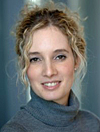 Computing Cancer
Computing CancerAbstract
Cancer is a highly complex aberrant cellular state where mutations impact a multitude of signalling pathways within the cell. Over the last few years it has become apparent that in order to understand and fight cancer, it must be viewed as a system, rather than as a set of cellular activities. The need to investigate cancer as a holistic system calls for new techniques that will allow this paradigm shift. In this talk, I will discuss some of the progress made towards achieving such a system-level understanding using computer modelling and formal verification. Looking forward, I will propose a grand challenge for computing and biology that could shed new light on our ability to control cell fates during development and disease and potentially change the way we treat cancer in the future.
Biography
Jasmin Fisher is a Senior Researcher at Microsoft Research Cambridge and a Reader and Group Leader in the Department of Biochemistry in Cambridge University. She received her BSc in Biology (1996) and MSc in Biophysics (1998) from Ben-Gurion University in Israel, and her PhD in Neuroimmunology from the Weizmann Institute of Science in Israel (2003). She started her work on the application of formal methods to biology as a postdoctoral fellow in the department of Computer Science at the Weizmann Institute (2003-2004), and then continued to work on the development of novel formalisms and tools that are specifically-tailored for modelling biological processes as a postdoctoral researcher in the School of Computer Science at the EPFL in Switzerland (2004-2007). In 2007, Jasmin moved to Cambridge to join the Microsoft Research lab. Jasmin is one of the founders of the field of Executable Biology and a leader in the area of formal methods in biology. She is a pioneer in using computer program analysis techniques to construct and analyse executable models of cellular processes and disease. Her group’s research focuses on molecular mechanisms controlling cell fate decisions during normal development and cancer.
-
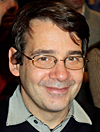 Proof Engineering, from the Four Colour to the Odd Order Theorem
Proof Engineering, from the Four Colour to the Odd Order TheoremAbstract
Thirty-five years ago, computers made a dramatic debut in mathematics with the famous proof of the Four Colour Theorem by Appel and Haken. Their role has been expanding recently, from computational devices to tools that can tackle deduction and proofs too complex for (most) human minds, such as the Kepler conjecture or the Classification of Finite Simple Groups.
These new “machine” proofs entail fundamental changes in the practice of mathematics: a shift from craftsmanship, where each argument is a tribute to the ingenuity of the mathematician that perfected it, to a form of engineering where proofs are created more systematically. In addition to formal definitions and theorems, mathematical theories also contain clever, context-sensitive notations, usage conventions, and proof methods. To mechanize advanced mathematical results it is essential to capture these more informal elements, replacing informal and flexible usage conventions with rigorous interfaces, and exercise apprenticeship with precise algorithms. This can be difficult, requiring an array of techniques closer to software engineering than formal logic, but it is essential to obtaining formal proofs of graduate-level mathematics, and can give new insight as well.
In this talk, we will give several examples of such empirical formal mathematics that we have encountered in the process of mechanizing a large corpus of Combinatorics and Algebra required by the proofs of the Four Colour and Odd Order Theorem.
Biography
Georges Gonthier is a Principal Researcher at Microsoft Research Cambridge, which he joined in 2003, after 13 year in France at Inria. Dr. Gonthier has worked on the Esterel reactive programming language, optimal computation of functional programs, formal verification of concurrent memory management, the join calculus model of concurrency and security, concurrency analysis of the Ariane 5 flight software, and a fully computer-checked proof of the famous Four Colour Theorem. He now heads the Mathematical Components project at the Microsoft Research Inria Joint Center, which recently completed the formalization of the Odd Order theorem, the landmark result that ultimately lead to the Classification of Finite Simple Groups. Dr. Gonthier was awarded the EADS Grand Prize in Computer Science in 2011.
-
 Strategic Thinking for Researchers
Strategic Thinking for ResearchersAbstract
From time to time at Microsoft Research we set aside time to talk about strategic aspects of research, that is, the big picture of why we do research and how to have different sorts of impact, beyond the more immediate tasks of writing papers, giving talks, and transferring ideas. This talk will cover some of these strategies for having a happy and productive career as a researcher.
Biography
Andy Gordon is a Principal Researcher at Microsoft Research Cambridge, where he manages Programming Principles and Tools, and is a Professor at the University of Edinburgh. Andy wrote his PhD on input/output in lazy functional programming, and is the proud inventor of Haskell’s “>>=” notation for monads. He’s worked on a range of topics in concurrency, verification, and security, never straying too far from his roots in functional programming. His current passion is a functional language to enable probabilistic inference from Excel.
-
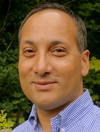 Pixel perfect – Using Image Processing to Improve Outcomes for Cancer Patients
Pixel perfect – Using Image Processing to Improve Outcomes for Cancer PatientsAbstract
Radiation therapy is an extremely effective cancer treatment, and is used in the treatment of around 40% of patients who are cured of cancer. Modern radiotherapy systems can deliver treatment doses with exquisite precision to static and moving targets within the body. The challenge for oncologists is no longer one of precision, but rather the complexity of the imaging data that we must comprehend in order to deliver the best cancer therapy. In this lecture, I present examples of the way in which image processing, tumour biology, and radiation oncology have become highly interwoven fields of study. I will also illustrate some important outputs of research collaborations between Addenbrooke’s Hospital and Microsoft Research Labs Cambridge.
Biography
Dr Raj Jena is a Consultant Clinical Oncologist for Cambridge University Hospitals NHS Foundation Trust, visiting fellow in the Faculty of Engineering and Physical Science at the University of Surrey, and a visiting scientist at the European Centre for Nuclear Research (CERN). His research interests are in the application of advanced imaging techniques and radiotherapy treatment to improve outcomes for patients with central nervous system tumours.
-
 Rough Guide to Being an Entrepreneur
Rough Guide to Being an EntrepreneurAbstract
At some stage, you might want to exploit your ideas by starting a company, just as Bill Gates and Paul Allen did in 1975. It might even be the next Microsoft, or bought by them. I’ll give an overview of the process, explain some of the success factors investors look for, and how to go about writing a business plan and getting off the ground.
Biography
Jack Lang is a serial entrepreneur and business angel with high-tech and Internet companies based in Cambridge, where he is Entrepreneur in Residence, Centre for Entrepreneurial Learning, at the Judge Business School, University of Cambridge, an affiliated lecturer and member of the Faculty Board at the Computer Lab and a by-fellow of Emmanuel College. His latest venture is Raspberry Pi, a $25 computer for education. Previously, he was founder of Netchannel Ltd, an early interactive TV company that was acquired by ntl—where he became chief technologist. Before that, he founded Electronic Share Information Ltd, one of the first online brokerages, acquired by E*Trade Inc. Prior to that, he started a consultancy (now SAIC UK Ltd) that was involved in the early days of the “Cambridge Phenomenon”, and was a proper academic at the Computer Lab. He is author of The High-Tech Entrepreneur’s Handbook (FT.Com/Prentice Hall 2001). He has other interests in molecular gastronomy and fireworks.
-
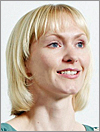 Digital Possessions
Digital PossessionsAbstract
It is well known that people struggle to manage and keep track of their ‘digital belongings’. This problem is exacerbated as our relationships and interactions with digital content diversify, shifting from the notion of digital objects – files – stored on a computer, to a variety of forms of content hosted on social media sites, streamed through services, and stored in the Cloud. In this talk, I draw on fieldwork to consider how digital possessions are understood in the current landscape of Cloud computing, Web 2.0 and operating systems that hide away digital objects in folder hierarchies, and what this entails for the ways people feel about, interact with, use and keep them.
Biography
Siân Lindley is a researcher in the Socio-Digital Systems group at the Microsoft Research lab in Cambridge. Her research involves studies of technologies in use and the practices that build up around them. Her recent research explores how people manage and keep their digital ‘stuff’, and how this is becoming more complex in the current landscape of cloud computing and social media. Siân has a PhD in Psychology from the University of York and an MSc in Human-Centred Computing Systems from the University of Sussex. She worked as a Lecturer at UCL’s Interaction Centre before joining Microsoft in 2007.
-
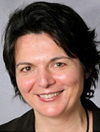 In Plain Sight: Online Tracking and Profiling
In Plain Sight: Online Tracking and ProfilingAbstract
Internet advertisers reach millions of customers through practices that involve real time tracking of users’ online activities. The tracking is commonly conducted through browser cookies by third-party ad services. They engage with websites to facilitate marketing campaigns and gather service analytics. By installing cookies on users’ computers, they track the users as they navigate from one site to another. Other trackers exploit shortcomings in the access control to the cache and apply cookie-less profiling. By using Java scripts in their webpages, the trackers await unexpected visitors and gain access to the cached content. In that manner, they can reconstruct the users’ browsing history.
At the same time, user applications that facilitate interaction with services, such as commonly used Internet browsers, reveal little or no information about the information flow between the devices and services. That leaves the consumers with no insight about the breadth of the digital footprints they leave while interacting with services and no understanding of how that data is exploited. In the broader context of privacy and cyber-security, it is important to consider methods and computing designs that empower consumers to make well informed decisions and take actions that keep themselves and other safe.
We outline a research agenda that investigates several aspects of this problem area. That involves (1) characterizing the tracking ecosystem and the value exchange within it and (2) understanding of the users’ attitudes, behavior, and awareness of the tracking practices. We discuss the findings of several studies that investigate these issues. While they motivate us to think of alternatives to the privacy invading practices, they also urge deeper questions about the principles of design and comprehensibility of computing systems.
Biography
As a Principal Researcher at Microsoft Research Cambridge, Natasa sets research directions for the Integrated Systems group, an inter-disciplinary team focused on the design, prototyping, and evaluation of information management and communication systems. Her research covers a spectrum of issues from sharing and making sense of information in collaborative settings, to analysing social media networks and devising trustworthy online services.
Natasa is a leading expert in the area of digital preservation. She is actively involved with the Open PLANETS Foundation and the EU SCAPE initiative on scalable cloud-based services for long term access to digital content. She is equally passionate about innovation in personal and social computing and promotes a dialogue between IT industry, consumers, and policy makers on the issues that arise from the novel usage of technology.
Natasa received her doctorate in Applied Mathematics from Carnegie Mellon University, Pittsburgh, PA, in 1988. Prior to joining Microsoft Research in 1998, she served as Chair of the Department of Mathematics and Computer Science at Seton Hill College and, subsequently, as Director of Research at the Claritech Corporation, a spin-off company from Carnegie-Mellon University focussing on Natural Language Processing and Information Retrieval. During her career at Microsoft Research, Natasa led a Research Partnership Programme, promoting collaboration between Microsoft Research and industry. She is actively involved with a wider community of academics and practitioners through public speaking and research collaborations.
-
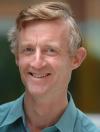 How to Write a Great Research Paper
How to Write a Great Research PaperHow to Give a Great Research Talk
Abstract
Writing papers and giving talks are key skills for any researcher, but they aren’t easy. In this pair of presentations, I’ll describe simple guidelines that I follow for writing papers and giving talks, which I think may be useful to you too. I don’t have all the answers—far from it—and I hope that the presentation will evolve into a discussion in which you share your own insights, rather than a lecture.
Biography
Simon Peyton Jones, MA, MBCS, CEng, graduated from Trinity College Cambridge in 1980. After two years in industry, he spent seven years as a lecturer at University College London, and nine years as a professor at Glasgow University, before moving to Microsoft Research in 1998. His main research interest is in functional programming languages, their implementation, and their application. He has led a succession of research projects focused around the design and implementation of production-quality functional-language systems for both uniprocessors and parallel machines. He was a key contributor to the design of the now-standard functional language Haskell, and is the lead designer of the widely used Glasgow Haskell Compiler (GHC). He has written two textbooks about the implementation of functional languages. More generally, he is interested in language design, rich type systems, software component architectures, compiler technology, code generation, runtime systems, virtual machines, garbage collection, and more. He is particularly motivated by direct use of principled theory to practical language design and implementation—that’s one reason he loves functional programming so much. He is also keen to apply ideas from advanced programming languages to mainstream settings.
-
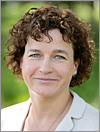 Summer School Chair; Welcome to PhD Summer School 2014
Summer School Chair; Welcome to PhD Summer School 2014Scarlet Schwiderski-Grosche is a Senior Research Program Manager at Microsoft Research Cambridge, working for Microsoft Research Connections in the Europe, Middle East, and Africa (EMEA) region. Scarlet has a PhD in Computer Science from University of Cambridge. She was in academia for almost 10 years before joining Microsoft in March 2009. In academia, she worked as Lecturer in Information Security at Royal Holloway, University of London.
-
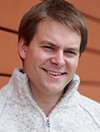 Body Part Recognition and the Development of Kinect
Body Part Recognition and the Development of KinectLate 2010, Microsoft launched Xbox Kinect, an amazing new depth-sensing camera and a revolution in gaming where your body movements allow you to control the game. In this talk I’ll present a behind-the-scenes look at the development of Kinect, focusing on the depth camera, the challenges of human pose estimation, and the body part recognition algorithm that drives Kinect’s skeletal tracking pipeline. Body part recognition uses machine learning to efficiently produce an interpretation of pixels coming from the Kinect camera into different parts of the body: head, left hand, right knee, etc. The approach was designed to be robust: firstly, the system is trained with a vast and highly varied training set of synthetic images to ensure the system works for all ages, body shapes & sizes, clothing and hair styles; and secondly, the recognition does not rely on any temporal information, allowing the system to initialize from arbitrary poses and preventing catastrophic loss of track.
-
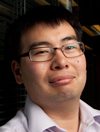 Cloud Computing—Big Data and Beyond
Cloud Computing—Big Data and BeyondAbstract
We live in an information society, with cloud computing is changing the way we live, work and play in a world of devices and services. In this talk we’ll explore what, why and how this new era of computing is changing the way we think about conceiving, developing and delivering software and services. We’ll then look at how the concept of Big Data is transforming science, and the opportunities it presents for the future. Find out more at www.azure4research.com
This talk will be followed by a hands-on Windows Azure workshop.
Making Magic with F# Type Providers
Abstract
Learn how F#, the open-source, functional-first language, can be used to effortlessly work with data at web-scale. It can make complex problems much easier to think through, and increase the quality and speed of any software project. Find out more at http://fsharp.org and experiment yourself at ww.tryfsharp.org.
Biography
Dr Kenji Takeda is Solutions Architect and Technical Manager for the Microsoft Research Connections EMEA team. He has extensive experience in Cloud Computing, High Performance and High Productivity Computing, Data-intensive Science, Scientific Workflows, Scholarly Communication, Engineering and Educational Outreach. He has a passion for developing novel computational approaches to tackle fundamental and applied problems in science and engineering. He was previously Co-Director of the Microsoft Institute for High Performance Computing, and Senior Lecturer in Aeronautics, at the University of Southampton, UK. There he worked with leading high value manufacturing companies such as Airbus, AgustaWestland, BAE Systems, Rolls-Royce and Formula One teams, to develop state-of-the-art capability for improving science and engineering processes. He also worked in the areas of aerodynamics, aeroacoustics and flight simulation.
-
 Probabilistic Programming the Future of Machine Learning?
Probabilistic Programming the Future of Machine Learning?Abstract
In today’s world of connectivity and ubiquitous data, we need to be able to solve ever more complex machine-learning problems. Ideally, we would like the solutions to be provided automatically, given a definition of the problem. But how do we even describe a complex and intricate problem in a way a machine can understand?
Probabilistic programming gives us a powerful and flexible way to express such machine-learning problems. It uses the rich expressivity of modern programming languages to describe a problem as an inference query. Once you have a probabilistic program, the idea is to use an existing inference ‘engine’ to actually run the program and so answer the inference query automatically. This allows the program to be tested rapidly and, if necessary, quickly modified and improved to meet the needs of the application.
In this lecture, I will describe efforts going on at Microsoft Research Cambridge to create a fast, general purpose programming language, called probabilistic C#. As an example, I will show how probabilistic C# can be used to produce compact, complex models of unstructured text. To do inference in probabilistic C# (to run the program), we use the Infer.NET inference engine. I will discuss some of the (many) issues arising in trying to build a general purpose inference engine and describe approaches we are investigating to make running probabilistic C# programs both fast and accurate. The aim is to make probabilistic C# an ideal language for solving the next generation of machine learning problems.
Biography
A principal researcher in the Microsoft Research Machine Learning and Perception group, John Winn is obsessed by making it easier to do machine learning. He works on automating machine learning with applications in information retrieval, computational biology, and machine vision, amongst many others. He recently worked on a paint program that could only paint horses and also built an object recognizer that caused Bill Gates to take off his glasses.
-
 Delivering a fabulous research talk
Delivering a fabulous research talkAbstract
We’ve all been there: a dark room, a long and boring speech accompanied by an endless stream of bullet-heavy PowerPoint slides. It’s maddening. In this session you’ll learn how to really engage an audience, how to deliver a research presentation with emphasis and energy, and finally how to use body language to your advantage. You’ll also learn what separates a good presentation slide from a bad one, and how to calibrate a speech so that even complicated, technical topics can be explained in a clear, concise, compelling way.
Biography
Dave is a strategic communications expert with more than 19 years of experience in the field. A former newspaper reporter and columnist, Dave has counseled senior executives at a variety of companies, managed communications teams and led business development efforts. He has also conducted storytelling workshops and presentation training sessions for thousands of executives at numerous companies, including Microsoft, CA, Clif Bar, Dell, CBS, Ingram Micro, aQuantive, T-Mobile, MercyCorps, DriveSavers, Reebok, Tripwire, Wieden + Kennedy, SnapChat, Zurich Insurance and Adidas.
He has spoken to numerous groups about how to translate complex scientific and technical information into clear, concise, compelling language. Before establishing Elevator Speech Inc., Dave was the general manager of Weber Shandwick’s Portland office. Before joining Weber Shandwick, he led a Waggener Edstrom PR team charged with developing strategic PR programs for Microsoft in a variety of industries, including financial services, manufacturing and healthcare. Dave was an award- winning reporter and columnist at The Galveston Daily News in Texas and an on-camera spokesman for The University of Texas Medical Branch. He is a graduate of the University of Northern Colorado’s school of journalism.
